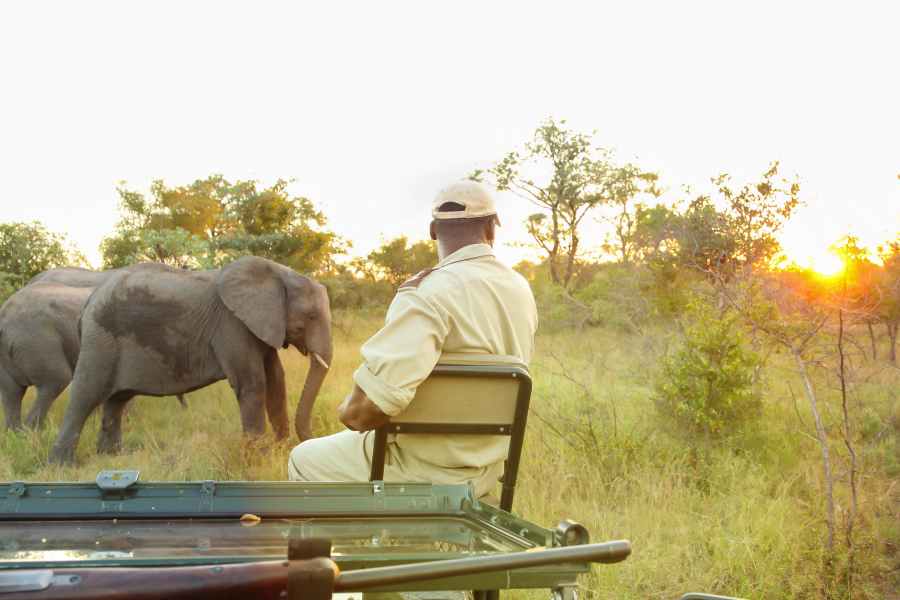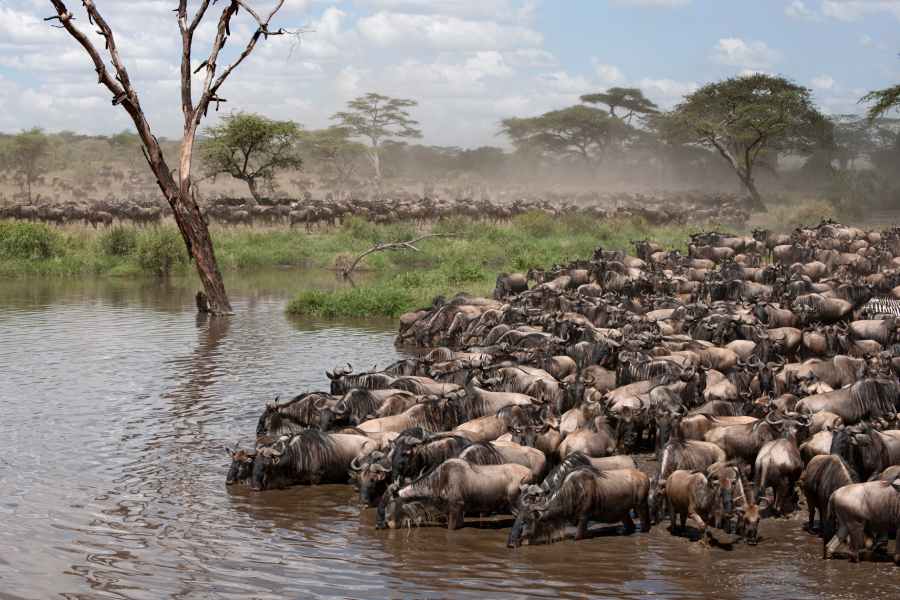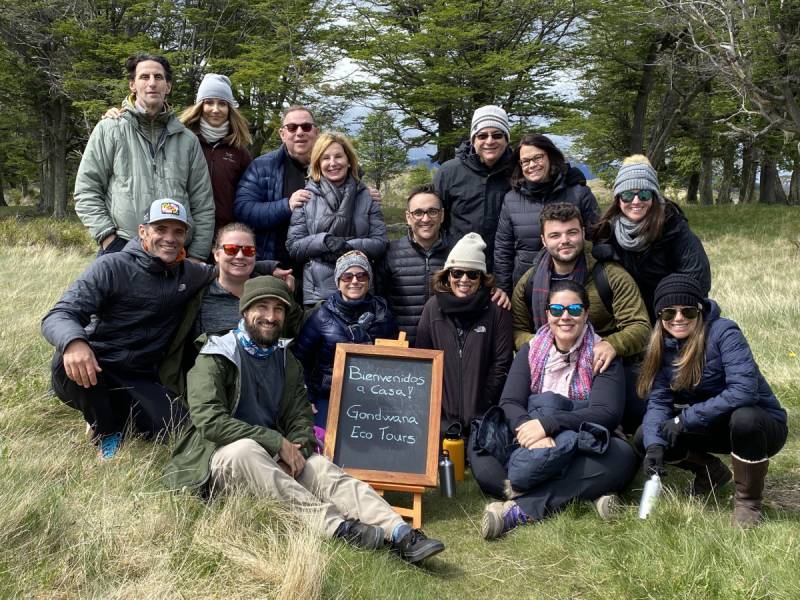Exploring The 3 Regions Of The Serengeti National Park
Download Travel Details >PRIVATE & SMALL GROUP TOURS TO THE WORLD'S BEST DESTINATIONS
Join Us For A Safari In Tanzania

Tanzania Escorted Tours In The Serengeti
 When you think about an African safari, 10-to-1 you are imagining a trek through the Serengeti National Park in Tanzania on a Serengeti Migration tour. Tanzania is one of the best places for a safari in Tanzania! The park has been made famous by the annual Great Wildebeest Migration, where a herd of two million wildebeest, zebra, and gazelle journey across the wild grasslands in search of grazing land with numerous predators in tow.
When you think about an African safari, 10-to-1 you are imagining a trek through the Serengeti National Park in Tanzania on a Serengeti Migration tour. Tanzania is one of the best places for a safari in Tanzania! The park has been made famous by the annual Great Wildebeest Migration, where a herd of two million wildebeest, zebra, and gazelle journey across the wild grasslands in search of grazing land with numerous predators in tow.
Although this annual phenomenon attracts thousands of tourists each year, there’s a great deal more to see and do on Tanzania escorted tours. In addition to the traditional “Big 5,” you’ll find world-class birdwatching and chimpanzee tracking in the country’s many parks and preserves, as well as sandy beaches along the coast and tall mountain peaks toward the interior region. But if the Serengeti has piqued your interest – have no fear! The park’s diverse ecosystem and myriad wildlife will keep you busy exploring for several days.
An Adventure In The Serengeti
The Serengeti National Park is one of the oldest game reserves in Tanzania. Located in the northern region of the country, it sits on the border of Kenya and the Masai Mara National Reserve. These two parks provide the backdrop for the annual Great Migration that attracts thousands of tourists each year. The park was named for the Maasai word “siringet,” which means “the place where the land runs on forever.” Considering that the park covers 5,700 square miles and includes a vast expanse of grassland plains, this name seems particularly apt!
This national treasure is divided into three distinct geographical regions for you to explore:
- The Southern Plains – this is the largest region in the park. It is mostly treeless, with a vast savannah landscape that serves as a breeding ground for the wildebeest and antelope from December until May when they begin their migration northward.
-
The Western Corridor – this region includes the Grumeti River and a forested area. Visitors flock to the river from May through July, when the Great Migration reaches the river’s banks. However, it is also a good place to watch water birds and other aquatic animals all year long.
- The Northern Serengeti – the remote woodlands of this region is the best place to spot elephants and giraffes. Visitors can also watch the many animals that take part in this annual migration cross the Mara River into Kenya on the final leg of their journey.

When Is The Best Time To Visit The Serengeti?
Planning a safari can be challenging. The first thing you need to do is to decide when you’d like to visit Serengeti National Park. If you are considering Serengeti migration tours, that will influence your trip schedule, too. Simply put, the best time to visit the Serengeti is from January to February or from June to October. Here are the pros and cons of each season:
June to October – The Dry season
Pros:
- It is easier to spot wildlife because many bushes begin to wither during this dry period.
- Animals gather at rivers and waterholes, making them easier to spot.
- The weather is generally sunny, with temperatures in the high 70s.
- There are fewer mosquitoes, which means less chance of malaria.
- This is prime viewing time for the Great Migration.
Cons:
- The park is usually crowded with visitors during the dry season.
- It gets quite cold at night, often dropping into the mid-50s.
- Occasional cold fronts are possible, with temperatures near freezing during this season.
November to May – Wet Season
Pros:
- Late January to early February is a great time to visit the Southern Serengeti to see wildlife calving.
- The landscape is lush and green.
- Fewer tourists visit during the rainy season, meaning you will find lower rates on everything from Tanzania-escorted tours to lodging and airfare.
- Birdwatching is at its best during these few months.
- From November to February, most rain storms are brief and barely interfere with your trip.
Cons:
- From March to May, it rains most days and is often cloudy.
- January through March is generally crowded near the Seronera area of the park.
Helpful Tips, No Matter What Time Of Year You Visit The Serengeti
If you are going on a Serengeti Migration tour, there are a few things to know that will make your trip go much smoother.
- If you are traveling during the heavy rains of April and May, you may find that many lodges and roads are closed. Mosquitoes are also at their worst during this time of year.
- The safest option for your safari is to travel with an experienced guide. Although it is possible to visit the park and stay overnight in a private campsite on your own, a Tanzania escorted tour provides too many perks to be discounted!
- Book far in advance if you are visiting during the Great Migration. This is the park’s busiest time and most safari camps and other accommodations fill up quickly.
- Ask about a side trip to Ngorongoro Crater. It’s only 41 miles away from the Serengeti National Park and well worth a visit!
- Pro tip: pack a wide-brimmed hat and sunscreen. During long game drives, you will spend a lot of time in the sun.
On Safari For The Great Migration
One of the best places for a safari in Tanzania is the Serengeti National Park. Tourists come for the Great Migration, no matter the season. The Great Migration is an amazing phenomenon to witness and a prime opportunity to see a diversity of wildlife moving together across vast, sweeping plains toward fertile grasslands for grazing. Plan your visit now, for a safari full of adventure!
If you do opt for a Tanzania escorted tour that follows the Great Migration, you will see:
- Millions of wildebeest migrating across the Serengeti plains.
- Herds of zebras and gazelles following the wildebeest.
- Predators such as lions, cheetahs, and hyenas hunting the migrating herds.
- Crocodiles waiting in rivers to prey on animals crossing the water.
- Spectacular river crossings with animals facing risks of drowning or predation.
- Dust clouds rising from the huge herds as they move across the landscape.
The Great Migration is truly an incredible sight to behold, and one that you don't want to miss if you travel to Tanzania!
Exploring The Serengeti From Various Perspectives
There are numerous ways to explore the Serengeti, each offering a distinct and captivating experience of this renowned wilderness. One can opt for a classic safari in a sturdy 4x4 vehicle, venturing deep into the savannah to witness the Big Five and other wildlife up close.
Or, if you prefer, a walking safari provides a more intimate encounter with nature, guided by expert trackers who unveil the secrets of the bush. For a panoramic view, hot air balloon rides drift over the expansive plains at sunrise, offering a bird's-eye perspective of the herds and their dramatic migrations.
Cultural tours to Maasai villages add a human dimension, showcasing traditional life and indigenous knowledge. Whether by vehicle, on foot, from the air, or through cultural interaction, each method of exploration promises unforgettable moments and a deeper connection to the Serengeti's unparalleled beauty and biodiversity.
No matter where you visit or what type of safari you embark on, you are sure to have an incredible time in Tanzania. From the Southern Plains to the Western Corridor, Tanzania provides a once-in-a-lifetime experience to its visitors! The diverse landscapes, abundant wildlife, and rich cultural heritage of Tanzania make it a truly captivating destination for travelers seeking unforgettable adventures.

